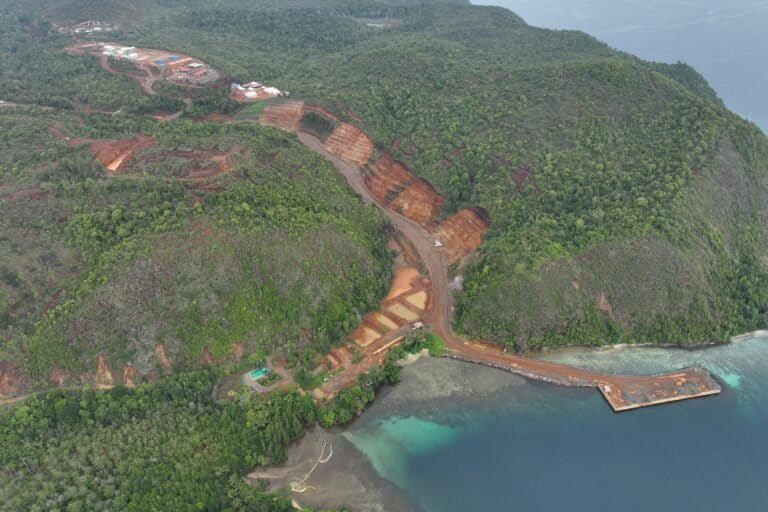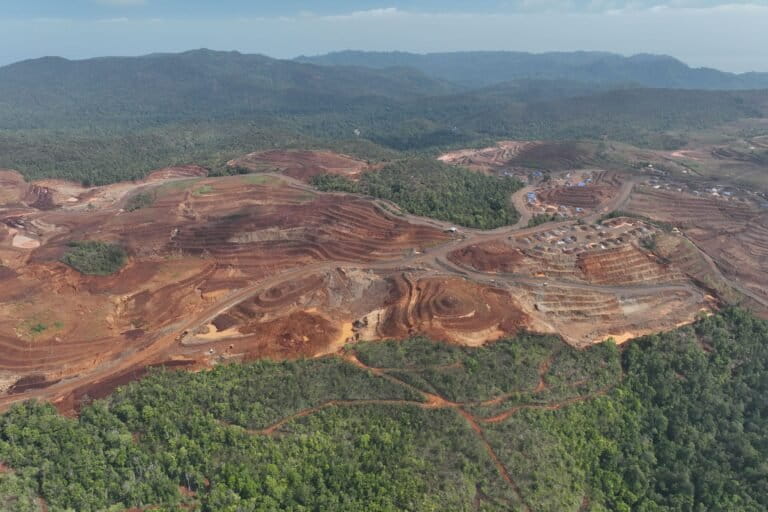JAKARTA — Indonesian Gov’t Reopens Controversial Nickel Mine in Pristine Raja Ampat Despite Alarming Health and Environmental Report
JAKARTA — Indonesian Gov’t Reopens Controversial Nickel Mine in Pristine Raja Ampat Despite Alarming Health and Environmental Report
In a highly controversial move, the Indonesian government has given the green light for a nickel mine to resume operations on Gag Island in Raja Ampat — one of the most biodiverse marine ecosystems on Earth — despite a damning company-backed study revealing serious environmental damage and health risks to locals.
State-owned miner PT Gag Nikel restarted operations on September 3, after a temporary suspension was lifted by the government. The ban had been imposed in June due to mounting environmental concerns.
Government officials justified the reopening by pointing to the company’s “green” rating in the environment ministry’s annual evaluation of corporate environmental and social practices.

“A green rating means the company meets all environmental regulations and contributes to community welfare,” said Tri Winarno, mining and coal director at the Ministry of Energy and Mineral Resources.
Echoing this, Environment Minister Hanif Faisol Nurofiq said the mine would now be under tighter scrutiny.
“We’re increasing the intensity of our oversight. Even if the license wasn’t revoked, there will be layered monitoring,” Hanif told Bisnis.com, noting that new variables have been added to the company’s environmental permit.
Contradictory Findings
However, these official claims sharply contradict a 2024 study commissioned by Gag Nikel itself. Conducted by the Sorong Polytechnic Institute, the study painted a grim picture: islanders are suffering from increased respiratory issues due to dust, and fishermen report that sediment from mining has driven fish far from shore — forcing them to travel two hours just to find viable fishing grounds.
The study, based on interviews with 50 local residents and workers, found that:
- 66% of respondents said the mine polluted the environment.
- 44% said mining activity negatively impacted their health.
In addition to dust, barge traffic has reportedly caused widespread coral damage by dragging anchors across the reefs, destroying stretches of coral more than 20 meters long.
“Green” Label Under Fire
For conservationists, the “green” label feels like a smokescreen.
“These ratings are just formalities that mask real destruction,” said Hilman Afif, campaigner at the NGO Auriga Nusantara. “There’s been no independent, transparent data on the coral, plankton, or ecosystem damage.”
Auriga’s director Timer Manurung questioned how a mine on a small island — where mining is technically prohibited under a 2014 law — could be labeled as environmentally compliant at all.
“It’s absurd. Mining on small islands affects not just the land, but the surrounding marine life. Has the government really measured these impacts?” he asked.
Meanwhile, during a site inspection in June, Mining Minister Bahlil Lahadalia downplayed environmental damage, claiming there was “no sign of pollution” and dismissing viral images of reef destruction as “fake news.” His ministry even defended Gag Nikel while revoking four other private mining licenses in Raja Ampat for similar environmental infractions — a move critics say reveals double standards.
Adding to the confusion, state-owned parent company Antam acknowledged in June that there are still unresolved environmental issues at the site, though CEO Achmad Ardianto called them “minor.”
Public Backlash Mounts
Environmental groups have expressed outrage. A Greenpeace Indonesia petition to halt all mining in Raja Ampat has already gathered over 60,000 signatures.
“Sedimentation from mining smothers coral reefs, destroying habitats for thousands of marine species and threatening local livelihoods,” said Hilman.
Arie Rompas, Greenpeace Indonesia’s Forest Campaign Head, was more direct:
“This decision shows the greed of both the government and corporations — putting profits ahead of environmental and human rights.”
Despite the backlash, officials argue the mine is too valuable to abandon. Gag Island produces 3 million metric tons of nickel ore annually, which is shipped to the Weda Bay industrial park on Halmahera Island — a key hub in Indonesia’s electric vehicle battery supply chain.
Nickel is vital for stainless steel and lithium-ion batteries, used in clean energy and EV technologies.
At What Cost?
Activists say the environmental price is far too high.
“No amount of nickel is worth the destruction of Raja Ampat — often called the last paradise on Earth,” said Arie.
With coral reefs, fish populations, and local communities under threat, critics warn that the government’s decision could permanently scar one of the world’s richest marine environments — all in the name of economic gain.


